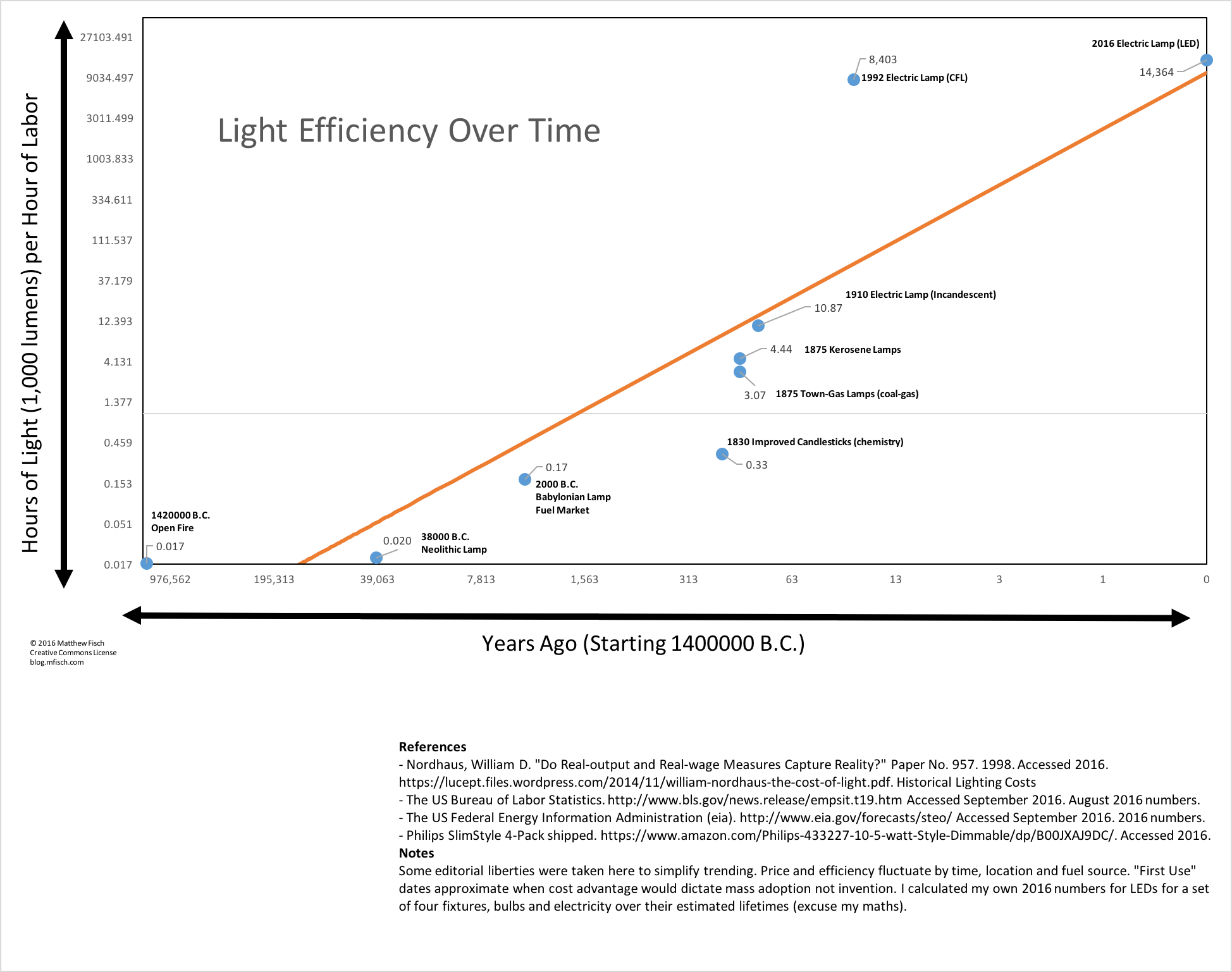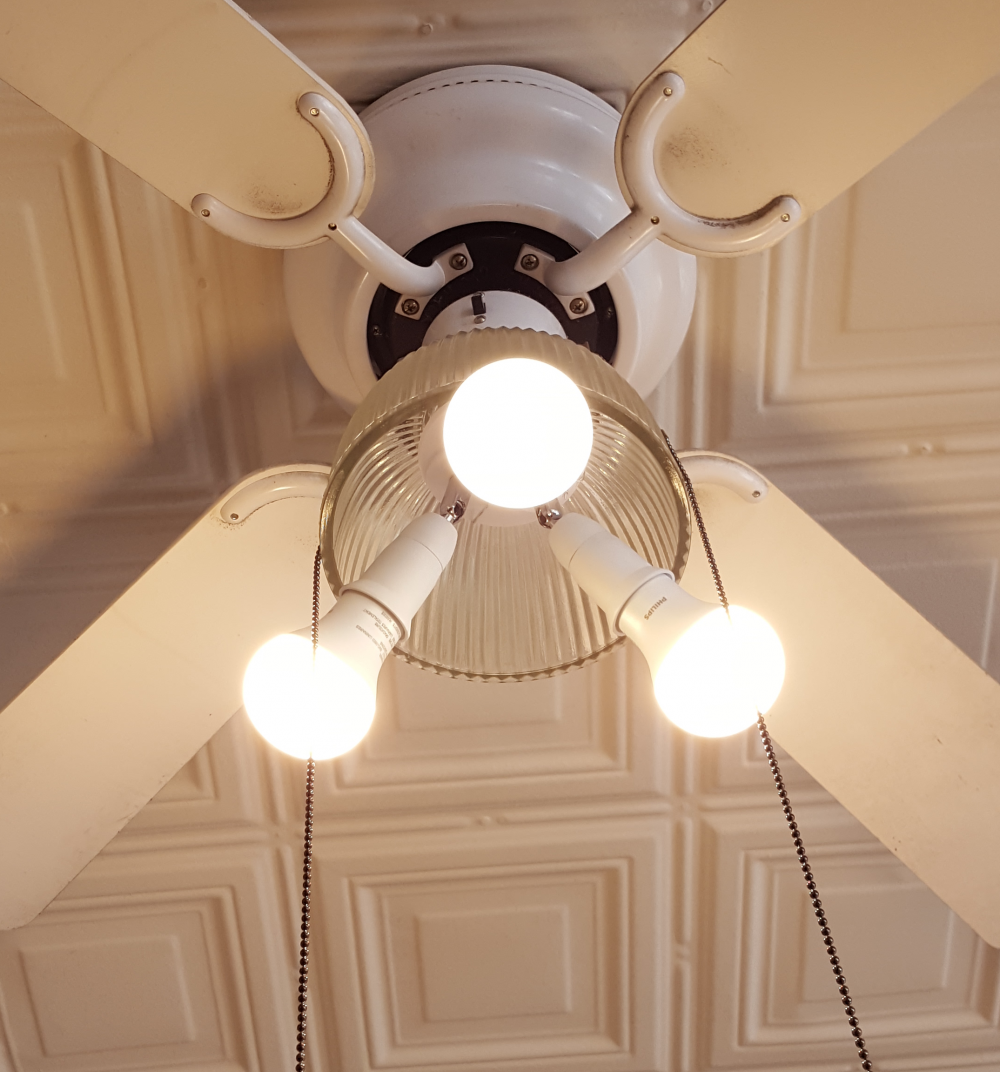I recently put together a co-working space in my rural hometown (post coming) as an alternative from my old work-from-home model.
As part of this exercise in dressing up an ancient tin-ceiling storefront it really drilled home how important effective lighting is in my work space for the entire room (and not just the economical task light).
I was looking for this, but couldnt find it so I crunched it myself. Here’s the history of artificial light in one graph.

Note the logarithmic scales for the intended perspective.
So, what have CFLs and LEDs done to my power bill? What do they mean to ancient structures like this one? Do people save money or use more light?

This ceiling fan now holds three (thanks to a nifty splitter) 1500 lumen LED bulbs from Phillips (4500 lumen) and draws 45 watts. The original incandescent drew 60 watts and threw 800 lumen.
Maths:
| lighting | Common Use (years ago) | Labor Price (hours of work per 1,000 lumen-hours) | Hours of light (1,000 lumens) per 1 hour labor | |||||
| Open Fire | 1422000 | 58.000000000 | 0.0172 | |||||
| Neolithic Lamp | 40000 | 50.000000000 | 0.0200 | |||||
| Lamp Fuel Market (fuel trade) | 4000 | 5.940000000 | 0.1684 | |||||
| Improved Candlesticks (chemistry) | 186 | 3.000000000 | 0.3333 | |||||
| Town Gas (coal-gas) | 141 | 0.326000000 | 3.0675 | |||||
| 141 | 0.225300000 | 4.4385 | |||||
| Electric Lamp (Incandescent) | 106 | 0.092000000 | 10.8696 | |||||
| Electric Lamp (CFL) | 24 | 0.000119000 | 8403.3613 | |||||
| Electric Lamp (LED) | 0.1 | 0.000069617 | 14364.2708 | |||||
| 3200 | lumens | |||||||
| 0.126 | kwh | |||||||
| 25.73 | labor hour price | |||||||
| 11 | bulb price | |||||||
| 25000 | lamp life | |||||||
| 42 | watts | |||||||
| 1050 | lifetime kwh | |||||||
| 132.3 | lifetime energy price | |||||||
| 0.005292 | energy cost per hour | |||||||
| 0.00044 | bulb cost per hour | |||||||
| 3.2 | brightness factor (*1000 lumens) | |||||||
| 0.00179125 | cost per 1000-lumen-hour | |||||||
| 0.000069617 | labor hours per 1000-lumen-hour | |||||||


